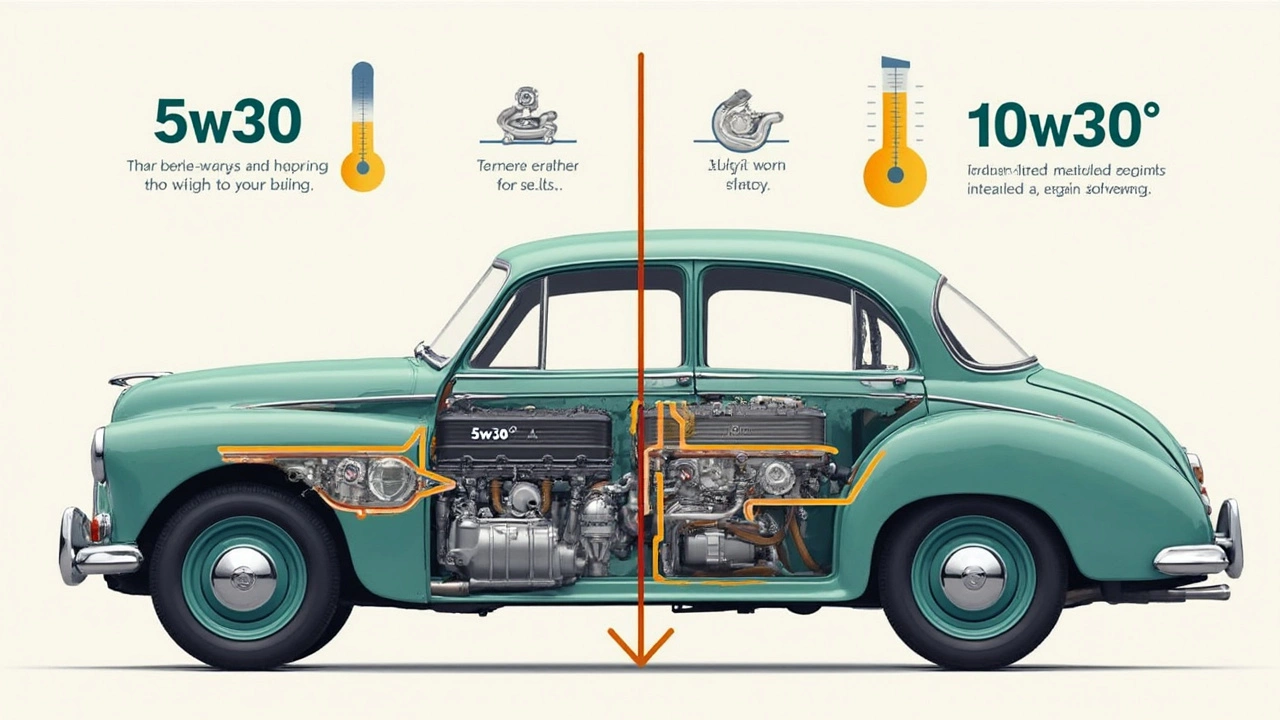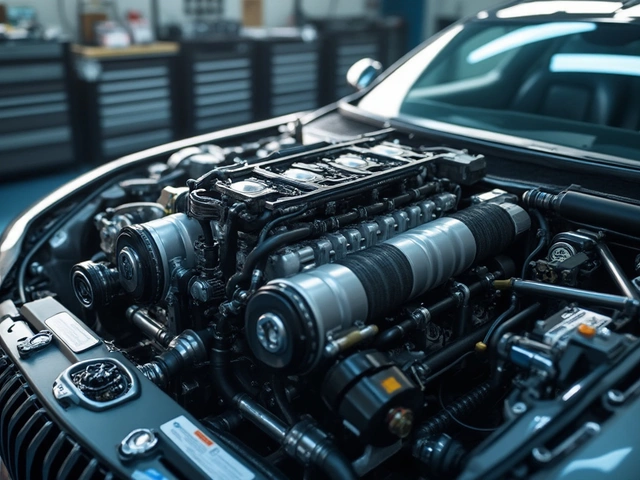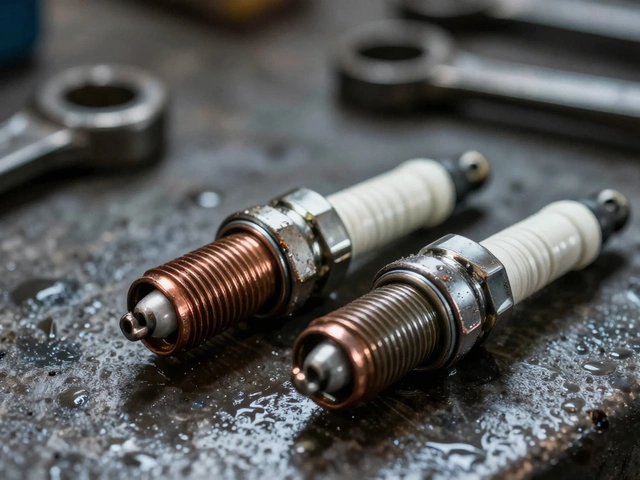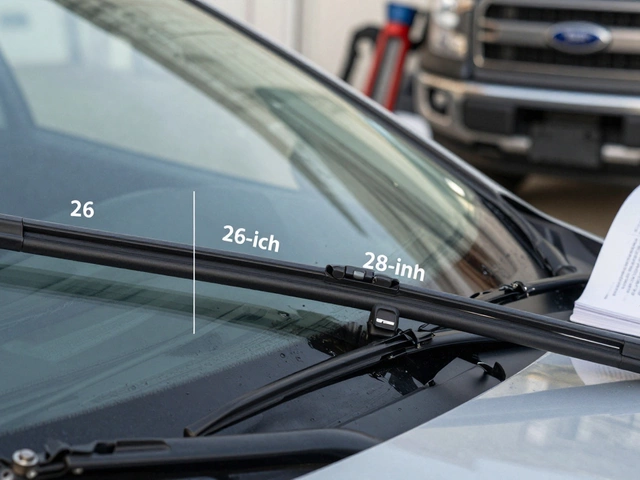Ever stare at the wall of engine oils at your local auto shop and wonder if the numbers really matter? You're not alone. Lots of folks reach for the 10w30 jug instead of 5w30 thinking it's all the same sticky stuff. The truth: those numbers actually tell a pretty important story about your oil and how well it will protect your engine.
Maybe you noticed your owner’s manual says 5w30, but your buddy swears by 10w30 because that's what his grandpa used. So, what actually happens if you go with 10w30 instead of 5w30? Is your engine doomed, or are the risks basically just hype? It's not just about what fits in the bottle—it comes down to how your car starts on a cold morning, how everything moves under the hood, and how long those pricey parts last.
If you want to avoid costly mistakes and get the most out of your ride, you’re in the right place. Grab your coffee—let's get honest about what swaps like this mean for your engine, why those numbers exist, and how you can figure out what actually works best for your driving life.
- Viscosity Breakdown: 10w30 vs 5w30
- Why Automakers Specify Oil Grades
- Effects of Using 10w30 Instead of 5w30
- Real Risks in Everyday Driving
- Temperature and Climate Matters
- Top Tips for Picking the Right Oil
Viscosity Breakdown: 10w30 vs 5w30
Engine oil viscosity is basically a fancy way of saying how thick or thin the oil is, and how easily it flows at different temperatures. The two numbers in 10w30 and 5w30 are a shorthand for that. The "W" stands for winter, so that first number is all about how the oil performs when it’s cold. The lower the number, the better your oil will flow right when you start the engine—especially on a cold morning.
So, for 5w30, the "5" means it stays thinner at low temps compared to 10w30. That matters because engines need quick oil circulation right after you turn the key, before things heat up. Now, the "30" at the end of both means both oils have about the same thickness once your engine is fully warmed up.
Check out this quick breakdown:
| Oil Type | Cold Temp (W Number) | Hot Temp (Second Number) |
|---|---|---|
| 5w30 | Flows easier at startup (thinner) | Standard thickness at running temp |
| 10w30 | Thicker at startup (flows slower) | Standard thickness at running temp |
What’s wild is the winter number can make a big difference in how well your engine’s protected. Car manufacturers try to balance easy starts in cold weather with solid protection when things are blazing hot under the hood. Using 10w30 instead of 5w30 means your oil is a bit slower to circulate in the cold, which can matter more than you think in northern states or if you’re parking outside.
Here’s a quick pointer: if you mostly drive in warm climates, the switch usually isn’t dramatic. But in the cold, even a few numbers can mean sluggish oil that leaves tiny engine parts exposed for a few extra seconds.
Why Automakers Specify Oil Grades
Car makers get super picky about oil grades for a reason. They spend years designing engines that run best with specific oil thickness, or viscosity. If you grab the wrong jug, you’re going against engineers who’ve tested engines in labs and out on the road—sometimes racking up a million miles in just research.
Take a look at your car manual: it doesn’t just say “engine oil”—it’s got a number like 5w30 spelled out. This isn’t random. The first number (“5w”) handles cold starts. The lower it is, the easier your engine turns over in chilly weather. The second number (“30”) measures how thick the oil stays once things heat up under the hood.
Here’s why sticking with the recommended grade matters:
- Engines need oil to move quickly and coat every surface right away, especially during cold starts.
- Too-thick oil means slower flow, leading to more wear when starting up.
- Too-thin oil under high heat might not protect all the parts well, which can lead to faster breakdowns.
- Modern engines have tight clearances—designed around the oil thickness specified by the automaker.
The Environmental Protection Agency (EPA) also pushes for energy-efficient oils. For example, a thinner oil like 5w30 can boost fuel economy by letting engine parts move with less drag.
| Oil Grade | Cold Start Viscosity | Hot Operation Viscosity | Recommended For |
|---|---|---|---|
| 5w30 | Great (thin in cold) | Stable (normal hot) | Most modern cars, all-season |
| 10w30 | Good (thicker in cold) | Stable (normal hot) | Older engines, warmer climates |
| 0w20 | Excellent (super thin in cold) | Thinner (hot) | Hybrids, newer high-efficiency cars |
Bottom line: automakers don’t just make oil grade recommendations out of habit. They’re betting the life of your engine on you following these numbers. If you’re tempted to switch, think about temperature, your specific engine, and what the folks who built it have to say.
Effects of Using 10w30 Instead of 5w30
Switching out 5w30 for 10w30 seems like a tiny move, but it does have real effects on your engine. The big deal here is how the oil flows when your engine is cold compared to when it’s hot. That first number—5 or 10—shows the oil’s “winter” viscosity, or how thin it stays at low temperatures.
If your manual calls for 5w30 and you pour in 10w30, your oil will be a bit thicker on chilly mornings. This means your engine might struggle a bit more to get moving after a cold start. Thicker oil flows slower, so it could take an extra second or two for oil to reach hungry parts like your camshaft and turbo, if you have one. That’s where most engine wear happens.
Once your engine’s warmed up, both oils do pretty much the same job. They’re both rated as “30” when your engine’s running hot, so protection under stress is about level. But for daily drives in cold spots, that thicker oil can lead to rougher starts, slightly worse gas mileage, and maybe a bit more engine noise when it’s freezing outside.
Here’s what you might notice if you use 10w30 instead of 5w30:
- Harder starting in winter, especially below freezing.
- Extra wear on engine parts during those first few seconds after ignition.
- Reduced fuel efficiency—yeah, even your wallet feels it a little.
- Possibly a voided warranty if the manufacturer finds out.
If you live somewhere hot, the swap probably won’t cause big problems since both oils flow about the same once the engine warms up. But if you’re in a place with harsh winters, it’s best to stick to what your car asks for. If you drive a newer vehicle, computer sensors expect a certain oil flow. Too thick or too thin and your car’s brain might freak out.
Bottom line: changing the engine oil type isn’t always harmless. It’s usually not a big deal for summer driving, but those cold starts can add up over time and hit your engine’s lifespan. Follow your manual unless you have a solid reason—and if you’re not sure, a quick call to your mechanic can save you a surprisingly big headache down the road.

Real Risks in Everyday Driving
You might wonder if using 10w30 instead of 5w30 is really a big deal during your daily commute. For most people, the car still runs, the check engine light stays off, and life moves on. But under the hood, there are some real trade-offs, especially in certain conditions.
The biggest deal-breaker comes first thing in the morning. The first number in engine oil—like the “5” in 5w30—shows how easily your oil moves in cold weather. If you swap to 10w30 and it’s a chilly day, your oil will get thicker and flow slower when you first start the engine. That means your moving parts don’t get lubricated as quickly. Engine wear adds up most right after startup, and using a thicker oil can make it worse, especially if your winters dip below 30°F (-1°C).
Here's a quick look at how 5w30 and 10w30 compare when it comes to cold starts and engine protection:
| Oil Grade | Pours Freely At (°F/°C) | Best For |
|---|---|---|
| 5w30 | -31°F / -35°C | Cold weather, all-purpose use |
| 10w30 | -13°F / -25°C | Mild climates, older engines |
Another risk is related to fuel economy. Car makers have been recommending oils like 5w30 because they help engines run with less drag. Thicker oil, like 10w30, can cause a tiny drop in your miles per gallon. It probably won’t wreck your budget, but over a year, it adds up – especially if you drive a lot.
On the flip side, if you push your engine hard, drive long distances, or live somewhere hot, 10w30 might actually protect against oil breakdown a bit better. But unless your car is older or designed for that weight, you’re usually better off sticking to what’s in the manual.
Still on the fence? Here are some signs your engine isn’t happy with the swap:
- Tougher starts on cold mornings
- Ticking or tapping noises right after you start up
- Oil pressure gauge reads higher than normal
- Noticeable drops in fuel economy
The bottom line: modern cars are built for thinner oils. Using 10w30 in a car that calls for 5w30 won’t usually cause instant damage, but it does raise your risk of long-term wear and other little headaches.
Temperature and Climate Matters
One thing a lot of people miss when picking engine oil is how much your local weather can mess with your engine if you use the wrong stuff. Oil likes to change its behavior depending on if it's freezing outside or pushing triple digits. That's why oil grades aren't just numbers—they're a clue to how your engine will handle hot summers and cold winters.
The first number in oil grades (like the "5" in 5w30) shows how well the oil flows in cold temperatures. Lower numbers mean the oil stays thinner when your engine is cold. So if you live somewhere with icy winters, 5w30 makes your car start easier and keeps parts happy in the morning. On the flip side, 10w30 takes longer to get moving when the temp drops, and your engine could run rougher until it warms up.
When it comes to hot weather, that second number ("30" in both 5w30 and 10w30) tells you how thick the oil stays at normal engine temps. Both these oils protect about the same once your car’s warmed up, but in seriously cold climates, starting up with 10w30 is just harder work for your engine, starter, and battery.
Here’s a simple look at oil flow at different temps:
| Oil Grade | Cold Start (°F) | Extreme Heat (°F) |
|---|---|---|
| 5w30 | -22° | 230° |
| 10w30 | -13° | 230° |
So, if you’re somewhere like Minnesota or Canada in January, switching to 10w30 could actually make starting your car in the morning a pain. In a spot like Texas or Arizona, where ‘cold’ means a hoodie in January, either oil will probably do the job—but there are still reasons to stick to what’s in the manual.
- If you drive in super cold conditions, 5w30 is just easier on your engine at startup.
- In mild or hot climates, 10w30 won’t hurt, but it doesn’t really give you any extra benefit, either.
- Mixing up the grade every season (like winter vs summer) can help extend engine life if your weather swings a lot.
Bottom line: don't ignore your climate. Matching your oil to the weather helps keep your engine smooth and avoids nasty surprises, no matter what the thermometer says.
Top Tips for Picking the Right Oil
If you're serious about keeping your car running smooth for years, picking the right engine oil shouldn’t be a guessing game. Here are some practical steps and facts to make the choice easier and safer for your ride.
- Check Your Owner’s Manual First: The manufacturer spent years testing your engine design. They list the exact oil grade—like 5w30 or 10w30—because it’s proven to work best for your car. Don’t ignore it.
- Pay Attention to Your Climate: 5w30 flows better in cold weather than 10w30. If you live somewhere that gets freezing temps, stick to 5w30. If you’re in a warmer spot, 10w30 might be fine, but still check the manual’s climate advice.
- Daily Driving vs. Heavy Loads: If you tow, carry heavy loads, or drive in stop-and-go traffic, your engine works harder and needs oil that meets those extra demands. Picking the right viscosity can help with wear and coolant flow.
- Stick With One Brand (If You Can): It’s not a must, but using the same brand and type of oil for each change can help avoid chemical clashes or small changes in additives.
- Don’t Confuse Synthetic and Conventional: Synthetic oil lasts longer and handles heat better. Many modern cars are designed for synthetics, so check your manual before switching types.
Wondering how common grades compare? Here’s how they stack up when it comes to cold and hot viscosity ratings:
| Oil Grade | Cold Climate Viscosity (Winter) | Viscosity at 100°C (212°F) |
|---|---|---|
| 5w30 | Flows easily at -30°C (-22°F) | 9.5-12.5 mm²/s |
| 10w30 | Flows easily at -25°C (-13°F) | 9.5-12.5 mm²/s |
Those numbers show why 5w30 is usually the safer bet for cold starts or frosty mornings. It just moves faster and protects your engine right when you turn the key.
A good rule: If you ever have doubts, stick with the grade your car’s designers recommend. That choice buys peace of mind and keeps expensive repairs off the table.








